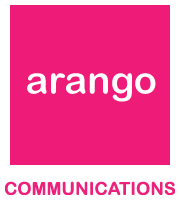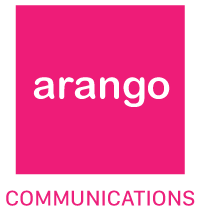
WELCOME TO THE JETPORT MARKETING COMMUNICATIONS HUB
This new easy-to-use platform allows you to effortlessly acquire resources and marketing assets for on-going JETPORT campaigns. It will be updated regularly with new campaign artwork, working files, and images. Be sure you check in often! And if you need any assistance along the way, please don’t hesitate to contact us.
Next update: June 12, 2023
DEFINITIONS
MARKETING PLAN
Objectives
Every strategy must pursue a goal that brings real benefits to the business. Examples:
- Generate brand awareness.
- Increase engagement with the brand.
- Educate the market.
- Generate sales.
- Reduce cost per sale.
- Increase lifetime-value.
KPIs
What metrics will show me that I am on the right path to meet my goal, these being the only metrics I cannot stop monitoring?
ï Inevitably a good KPI should be:
ï Important for strategy.
ï Easy to understand.
ï Easily measurable.
ï Able to lead to positive action
Buyer
The concept of person is different from that of target audience. While the target audience is based on a description of a demographic you're looking to reach, the persona is a semi- fictional description of your ideal customer.
Adaptation of the contents to the sales funnel
The sales funnel demonstrates that, of the many people that come to you, only a fraction will go through the entire process and actually become a customer.
ï Classify at which conversion point a potential customer is.
ï Shorten the sales cycle.
ï Generate content for each of the stages of the funnel.
Content distribution channels
Now that you have a well-structured persona and a sales funnel mapped out, it's time to choose whichcustomer acquisition channels to invest in. That is, where you are going to distribute your content.
Blog
- According to Neil Patel in his 25th tip, 82% of blogging marketers see a positive ROI from their inbound marketing.
- It is the general basis of a content marketing strategy.
- It offers a greater range of possibilities, both for the variety of formats it supports, for the options to convert leads and generate more business opportunities.
- All the traffic you get is yours.
- Drive traffic to your website. Companies that publish in a blog receive 3.7 more visits.
Videos
- Using video in your content marketing strategy is a powerful initiative to increase your market authority andeducate your audience and one that should grow even more in the coming years.
- One of the great advantages of video content is that it is easy to consume on various types
of devices, such as cell phones, tablets, etc. In addition, this format has a high perception of value by the viewer, while it is cheaper and easier to make than it seems.
Rich Material
Due to its depth, rich material is a type of content aimed at educating the public. Within the strategy, it isconsidered to be of great importance, since it enables more potential customers to be captured. However, to be successful it is necessary to know how to produce it.
Examples: e-books, templates and white papers, which have more valuable and informative content than a blogpost.
Interactive web
These consist of materials that offer an original and captivating experience to people who browse a website, since they can actively participate in the consumption of the content.
Advantages of having an interactive website
- Longer time spent on the page, which positively influences SEO positioning.
- More brand mentions and backlinks, as they are more interesting for users to share on their social networks and websites.
- Valuable data about the audience, which can be used to develop more precise sales
strategies.
- 94% higher conversion rates than static web pages, as this study by Ion Interactive and Demand Metric shows.
Social Media
What you need before you start?
ï Our brand’s image:
What do followers, or potential followers, think of when they see your brand? What would they expect of you?
What’s your tone of voice?
ï Your brand’s image:
What do followers, or potential followers, think of when they see your brand? What would they expect of you?
What’s your tone of voice?
ï Pick your platforms:
What platforms will you be using?
Would you use professional channels such as LinkedIn or would you go down the image-based route of Instagram? Or would it be a mix?
What do you feel would work best for your brand’s image and audience?
ï
Competitors:
How do they convey themselves?
How do they interact with their audience on subjects such as handling complaints or making announcements?
ï Collect visual examples
A good place to start is collecting visual examples of what posts you like. Get a good mix of types of content, text,images, videos, gifs, as well as posts on each social media platform so you can see how brands do it for each platform.
Social Media Accounts Important
List out all your social media accounts. This will help you keep track of all your accounts and what yourusernames are. It’s not just your posts that should be consistent, if your usernames are consistent too, then it’ll be easier for users to find you on all platforms.
Define your content
Now that you know all the social media accounts you have, it’s time to define what content you will post on each platform. For example, articles might only be for LinkedIn, Facebook and Twitter. But behind-the-scenes posts might only be for Instagram.
Brand language
How do you talk about your brand? How do you refer to your staff?
List out some key phrases, or words that describe your brand and businesses. It could be how to write your business name, for example, JetPort with Uppercase "P" Or it can be the phrase that succinctly describes your company,
what is that phrase?
When and where will it appear? Could be "Peace on Mind"
Tone and voice
This is about the kind of voice you want followers to pick up on. Brainstorming keywords is a good place to begin forming a style and overall tone, so for example, your brand’s attitude could be conservative, professionalapproach is appropriate. It’ll depend on your industry and your brand persona.
Spelling, grammar and punctuation
Keep this consistent by defining it in your social media style guide. You don’t need to write out every single spelling you prefer, but just adding in your social media style guide that you use American spelling is enough.
This goes for grammar and punctuation too. Pick a style guide like the Associated Press Stylebook or the ChicagoManual of Style. From there you can make adjustments or tweaks in your social media style guide if there is something from the guides that might differ from your preference or doesn’t suit your brand, tone, or voice.
Emojis
Emojis are becoming a regular occurrence now, frequently being used by a large proportion of brands. They’re often used to illustrate or punctuate and can prove to be a useful tool in making your posts more noticeable.
Hashtags
Hashtags go hand-in-hand with social media. They’re almost a necessity because they’re an excellent way forusers to find your brand. If your product is private charter and you use that as a hashtag, people searching that hashtag might find your product and brand!
It’s also a great way to collect posts for a certain campaign and product for users to quickly access and find other testimonials or posts on your product or business.
LinkedIn is the social network that has a high level of lead generation: it is 227% more effective than other social networks, such as Instagram and Facebook. This is because there is a network of B2B and B2C professionals with whom you can work, in addition to the fact that it is a platform specialized in commercial activities.
In fact, search interest for the term “LinkedIn” has increased more than 295 percent since 2010. And, when it comes to interesting LinkedIn statistics and LinkedIn facts, there is a surprising abundance.
LinkedIn now has more than 900 million members with over 58 million registered companies.
About Strategy Updated 2023
ï
Native documents on LinkedIn generate the highest number of likes. They also have a higher chance to drive more conversions as well.
ï Native documents also drive the highest number ofpost impressions.
ï Images make people more likely to comment in the case of middle- sized accounts.
When creating any kind of content on LinkedIn, another important thing to consider is whether you should post it from your personal profile or business page.
Your LinkedIn profile is your personal account as part of your personal brand and your business page is the face of your organization.
But the most of the company pages on LinkedIn have a considerably lower reach, compared to personal profiles.
Most people are more likely to resonate with a personal brand with a human face than a corporation with a logo.
People prefer to connect with other people and relate to personal stories more.
We can leverage personal branding as well as LinkedIn outreach when using your personal account to increase our engagement.
So, regardless of your role, we should strongly consider leveraging the executive profiles of your B2B company to tell our story.
Meanwhile, you can use your company page to:
ï Update your followers on what you do and how you help.
ï Share your latest content or articles.
ï Share behind-the-scenes information and what you’ve been focusing on.
Steps:
1. Improve LinkedIn business page
ï Your company overview information (“about” page, vision, mission, value, what you do, and so on.).
ï Company logo and cover image.
ï Organization’s details (website, industry, headquarters, etc.)
2. Optimize your personal LinkedIn page
Your LinkedIn profile (or executives) is like your personal landing page.
When prospects scroll through your profile, they should be able to tell at a glance:
ï What you do and who you help e.g. Jetport Executive sales
ï Why they should connect with you e.g. proven information about Private charter services
ï What step they should take next e.g. send a message.
3. At least one daily post.
Meta (Facebook)
Facebook had 2.963 billion monthly active users in January 2023, placing it 1st in our ranking of the world’s most ‘active’ social media platforms.
Meta Business Suite
Meta Business Suite is a free platform that allows you to manage all your business posts on Facebook, Messenger and Instagram from one place. Without having to switch from one application to another, you can create, publish and manage your content, respond to comments and direct messages.
ï Integrated advertising.
ï You can create and manage your advertising campaigns on Facebook, Messenger and Instagram from thesame platform. With this you can reach your target audience through advertisements that you can customize.
ï Another great advantage that Meta Business Suite offers you is its post scheduling feature, with which you can schedule each of your posts in advance and set the specific date and
time for them to be published in your accounts. This allows you to save time and ensure that your content is published at strategic times to maximize its reach.
ï You can also analyze and measure the performance of your publications and advertising campaigns on Facebook, Messenger and Instagram.
How use it step by step
1. Create an account: To use Meta Business Suite, your company needs to have a Facebook page.
2. Link your Facebook and Instagram accounts to be able to manage them from the platform.
3. Schedule your posts: Select the “Create Post” option and choose the account you want to post to (Facebookor Instagram). In the "Post details" section, write the content you want to share, add an image or video and choose the date and time you want it to be published. Finally, click Schedule. You can also customize the content according to the account you want to post to, for example adding hashtags on Instagram and links on Facebook.
4. Manage comments and direct messages: Click on "Inbox" within the platform. Here you can respond to the comments and messages you have received and to manage them effectively.
5. Create an ad campaign: If you want to create an ad campaign, go to home and select the "Create ad" option. Here you need to choose your advertising objective and fill in your campaign details such as budget, duration, and target audience.
6. Measure performance: Select the “Insights” option to see all the important metrics like reach, engagement, andcost of your ad campaigns, allowing you to fine-tune your strategy for better results.
YouTube
Having a YouTube channel for a company can help a lot to drive traffic to the company's own website. Theaudiovisual platform par excellence is a great showcase for business and that is why many world-renowned companies have decided to open an account on YouTube.
Tools Automation tools
Marketing Automation tools involve many functionalities, such as Landing Pages, Email
Marketing and email automation flows. This facilitates and extends the management of Leads and their maturity in the sales funnel.
- Marketo
- Pardot
- Hubspot
- Leadsquared
Email Marketing
Email Marketing is one of the main customer relationship channels. After the visitor has the first contact with your company and becomes a Lead, it is through Email Marketing that you will communicate with him and offer him more content until he is ready to talk to the sales team.
- Easymailing
- Mailchimp
- Acumbamail
- Aweber
- CheetahMail
Landing page
A landing page is a webpage designed to persuade users to take one specific action. For example, having users sign up for a newsletter, purchase a product, or RSVP for an event. Users typically arrive at landing pages via apay-per-click advertising campaign. But they may also find your landing page through your homepage, social media posts, organic search results, and email campaigns.
- LeadPages
- Lander App
- Instapage
- PageWIZ
What features should it have?
- A/B testing so you can easily test elements on your landing page.
- A good and fast editor to create your landing pages.
- An easy functionality to be able to export your landing page to your website and blog.
- Variety of templates (good designs and templates for your type of business).
- Metrics to be able to track the visits and conversions of your landing page.
- Integrations with your Email Marketing service.
- Integration with WordPress if you don't know programming.
SEO
Search Engine Optimization tools (Search Engine Optimization or SEO) aim to help companies improve their position in search engines like Google.
These platforms have many features such as keyword research, site optimization through plugins, and analytics.
- SEMRush
- Screaming Frog
- Ahrefs
- Sistrix
Analytics
Among the advantages of using this type of platform is the evaluation and understanding of the interest of visitors to the site.
In this way, it is possible to measure the return on investment (ROI) of the actions carried out and detect whichactions and strategies generate the most results to attract and interest the public.
The first element of Google Analytics is data collection. The platform can gather a broad range of data about your site and how visitors use it. The exact nature of the data collected will be discussed in depth later. It includes, most notably:
ï How many visitors your pages get.
ï Where visitors come to your pages from.
ï How those visitors progress through your site.
ï What visitors do on your pages.
ï How visitors interact with elements on your pages.
ï How long visitors spend on your pages.
ï At what stage of a visit users leave your site.
Google Analytics uses a simple JavaScript code to gather all this data. You get that code when you set up Analytics for your website
CMS
These tools make it possible to create, edit and publish all kinds of content, as well as attach content published on other platforms, such as YouTube videos or podcasts.
- WordPress
- Joomla
- Drupal
- Magento
- PrestaShop

